On November 25, 1899, George R. Davis died in Chicago. He served as the Director-General of the 1893 World’s Fair. This short biographic sketch of Davis appears in “My Country, Tis of Thee !” or, the United States of America; Past, Present and Future by Willis Fletcher Johnson and John Habberton, (John Y. Huber Company, 1892):
A portrait of George R. Davis from Picturesque World’s Fair (W. B. Conkey, 1894)
The Director-General of the Exhibition, its chief executive officer, upon whom the real responsibility for the conduct of the World’s Fair rests, is Col. George R. Davis, of Chicago.
He was born in Massachusetts in 1840, and was educated in the schools of that State. Early in the war of the Rebellion, he became a volunteer in the Union Army and served through the entire struggle with great distinction. In 1871 he retired from military service and entered business life in Chicago, where he was eminently successful.
In 1878 he was elected to Congress and was re-elected in 1880 and 1882, and in the fall of 1886 he was elected Treasurer of Cook County, Illinois, which includes the city of Chicago.
Here is an excerpt of an essay by Director-General Davis from The World’s Columbian Exposition, Chicago, 1893 by Trumbull White and William Igleheart. J. W. Ziegler, 1893.
INTRODUCTION
By Col. George R. Davis, Director-General of the Exposition
When the gates of the World’s Columbian Exposition have been finally closed it will be time enough to impress its lessons upon the world. To attempt to do so now would be premature, and perhaps misleading. But since its glories have been unveiled to the public gaze, and its success has been assured, it is well enough to review the successive steps which have led to that success, and to present in a comprehensive way some of the features which will make it ever memorable in the annals of International Expositions. No one can appreciate fully the magnitude and the significance of the microcosm at Chicago in 1893 without some such knowledge as is herein presented, of how it came about that on the shores of Lake Michigan such wonders have been wrought.
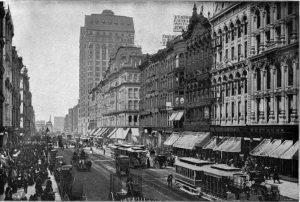
Downtown Chicago circa 1892, showing a view of State Street looking north from Madison. Image from Martin’s World’s Fair Album-Atlas and Family Souvenir (C. Ropp & Sons, 1892).
Chicago possessed many well-supported claims, aside from the distance from the sea board, to furnish the ideal site for an ideal Exposition. In itself the phenomenal city—so gigantic, so young, so rich, strong and powerful—is the very essence of American progress. It is so essentially the most distinctively American of the great towns of the United States, that many other cities are foreign compared with it. To all discerning minds it consequently appeared eminently proper that the celebration of our four centuries of unexampled prosperity, of which this marvelous city is itself the apotheosis, should be held in Chicago.
Upon Chicago’s own part there was no sort of doubt as to her peculiar fitness for the undertaking, and she entered into the competition to secure it with characteristic energy and enthusiasm, both as unlimited as her strength and courage. It is now a matter of history that she won, and it is scarcely worthwhile to describe in detail the heroic measures resorted to, in securing the prize, over her older and subtler sisters. The pledged ten millions and more were raised, and a site acceptable to the National Commission was found. This was far more difficult than may appear at a glance, owing to the characteristically stupendous scale upon which Chicago immediately began the formulation of her Exposition plans. It was not easy to find commensurate space with improved surroundings. Jackson Park, the proposed location, was only partially improved, and owing to this fact the proposition of a divided site was made, and strange as it now seems, had many supporters. Gradually, however, with strenuous efforts, the makers of the World’s Fair struggled towards the light, and the site problem was finally solved by the acceptance of Jackson Park and Midway Plaisance upon the proffer of the same by the South Park Commissioners.
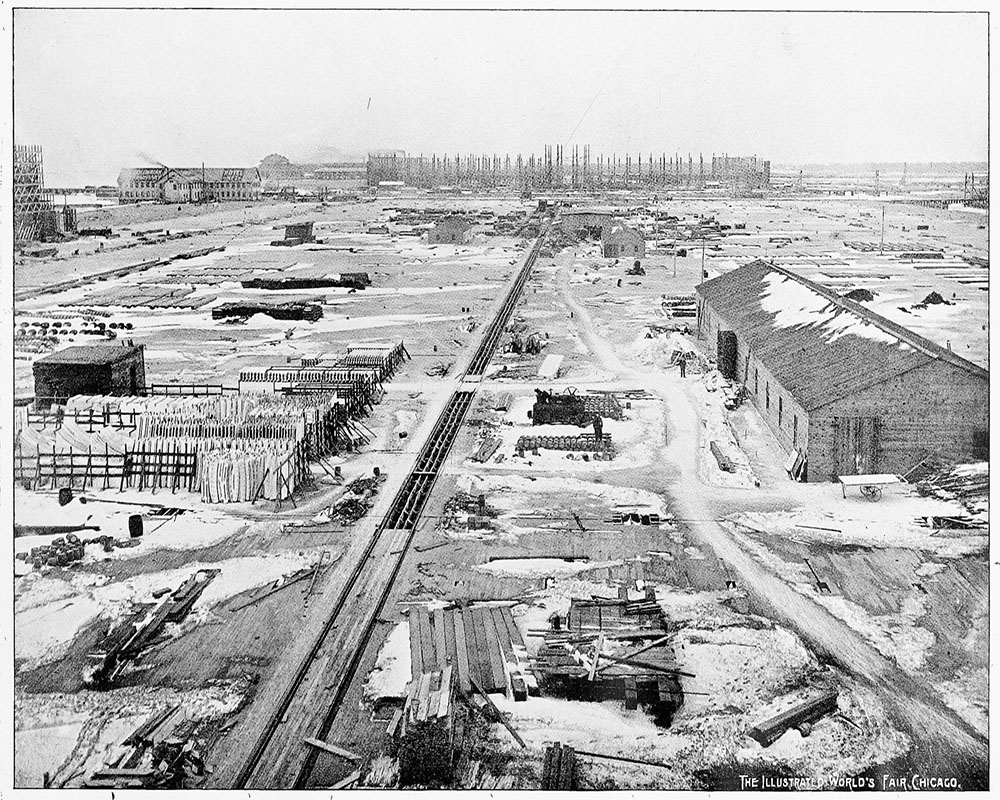
Construction of the foundation of the Manufactures and Liberal Arts Building (foreground) and framing of the Agricultural Building (background). Image from The Illustrated World’s Fair, February 1892.
In this way was obtained a location of unexampled beauty and extent, stretching nearly three miles throughout its extreme length. Along the east front lies Lake Michigan, while in every other direction the Exposition grounds are bounded by the fringing tree tops of one of the vastest park systems in the world. Yet necessarily included in the magnificent site was a considerable amount of unimproved land, comprising a series of swamp and sand hill, and from this natural defect grew the most beautifying single feature of the entire landscape scheme. Grand basins and broad lagoons ultimately replaced swamp and unsightly sand hills, and resulted in the now famous Venetian effect of the World’s Columbian Exposition, which fills the beholder with dazzled delight. But this came only from months of Titanic toil, and the expenditure of vast sums, and following with all possible speed hard upon the preparation of the background came the process of actual construction of the main buildings. It is not easy to overestimate the stupendous character of this portion of the greatest enterprise of modern times. The utmost power of genius and many millions of money were unitedly brought to bear upon the execution of the infinite details of the general plan. The greatest architects in America designed the structures, the most skilled artisans executed their designs, famous artists supplied the ornamentation, while an army of humbler workers ceaselessly toiled still over the soil itself. Only those who were of this gigantic enterprise can grasp its immensity, the intricacy of the executive machinery of the Fair, the constant enlargement of plans, the addition of new structures, the multiplicity of detail, the enormous daily outlay required to keep in harmonious and perfect rhythm the many thousand picks and shovels and hammers, the conflicting ideas of the thousands of artists, sculptors, decorators, and finishers. Nor can any comprehensive impression be conveyed of the obstacles and discouragement from the elements, from wind and water, from fire and snow. Cyclones swept away the work of weeks in a lightning flash; Lake Michigan lashed by a furious tempest thundered threateningly against the very walls of the great Hall of Manufactures and Liberal Arts. Sailors, climbing to perilous heights which landsmen dared not attempt, laboriously cleared snow drifts from crushed roofs, only to find heavier flakes falling anew while they toiled. The second spring of Exposition preparations witnessed an unprecedentedly wet season, and its last winter was one of unexampled severity, yet not for a moment did the work flag. Enthusiasm bordering upon heroism, and zeal that was genuine inspiration, marked every division of the Exposition. Not an officer, not a workman, but subordinated self to the one end. There is a long list of names that should be emblazoned on bronze, and placed in Jackson Park, testifying to future generations of the worth and efficiency and self-sacrifice of men who made the Fair. Names of men who sacrificed time, personal ambitions, business interests and association with their families in order that the promise of the nation should be made good, and the gates of Jackson Park thrown open to the world at the appointed time.
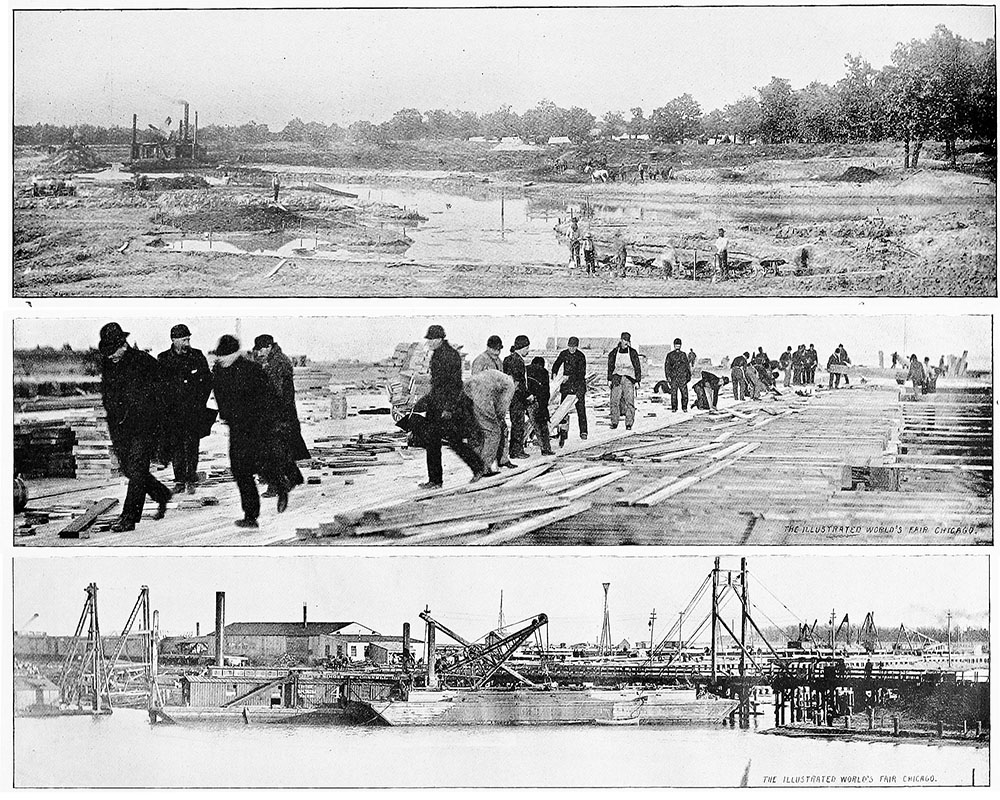
Views of (top) dredging the Lagoon, (middle) laying the floor of the Manufactures and Liberal Arts Building; and (bottom) a view across the Lagoon during construction. Image from The Illustrated World’s Fair, August 1891 and December 1891.


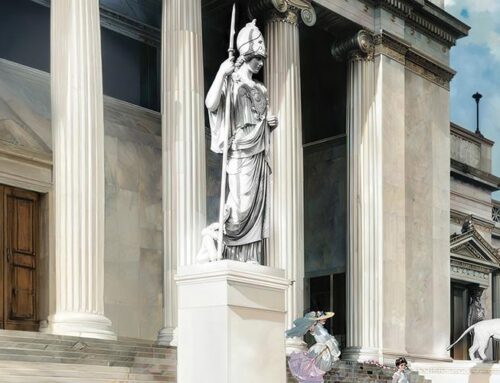
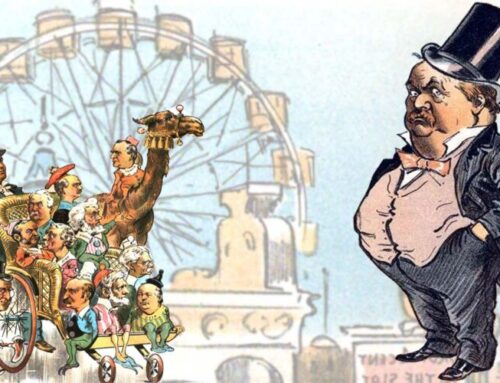
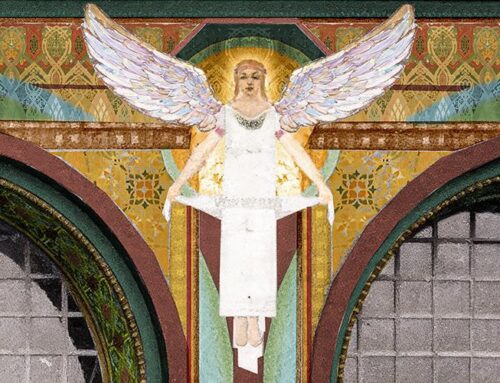
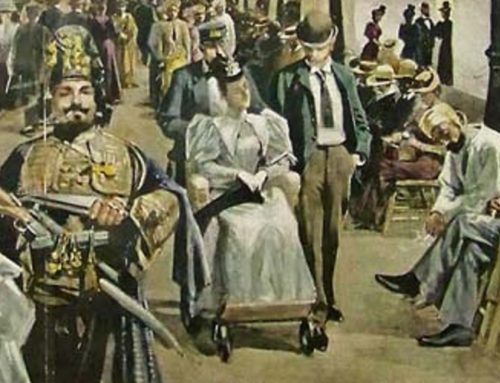

I have the picturesque worlds fair fine art series 1- 16 what more can you tell me about these and there is his signature in it right under his picture that looks to be real and not printed just seeking more information
Hello,
We’ve been posting digitally edited versions of pages from PICTURESQUE WORLD’S FAIR. AN ELABORATE COLLECTION OF COLORED VIEWS here:
https://worldsfairchicago1893.com/tag/picturesque-worlds-fair/
The signature under Davis’ introduction is printed in all copies of the publication:
https://worldsfairchicago1893.com/2017/12/06/picturesque-worlds-fair-an-elaborate-collection-of-colored-views/
A lovely book, nonetheless!